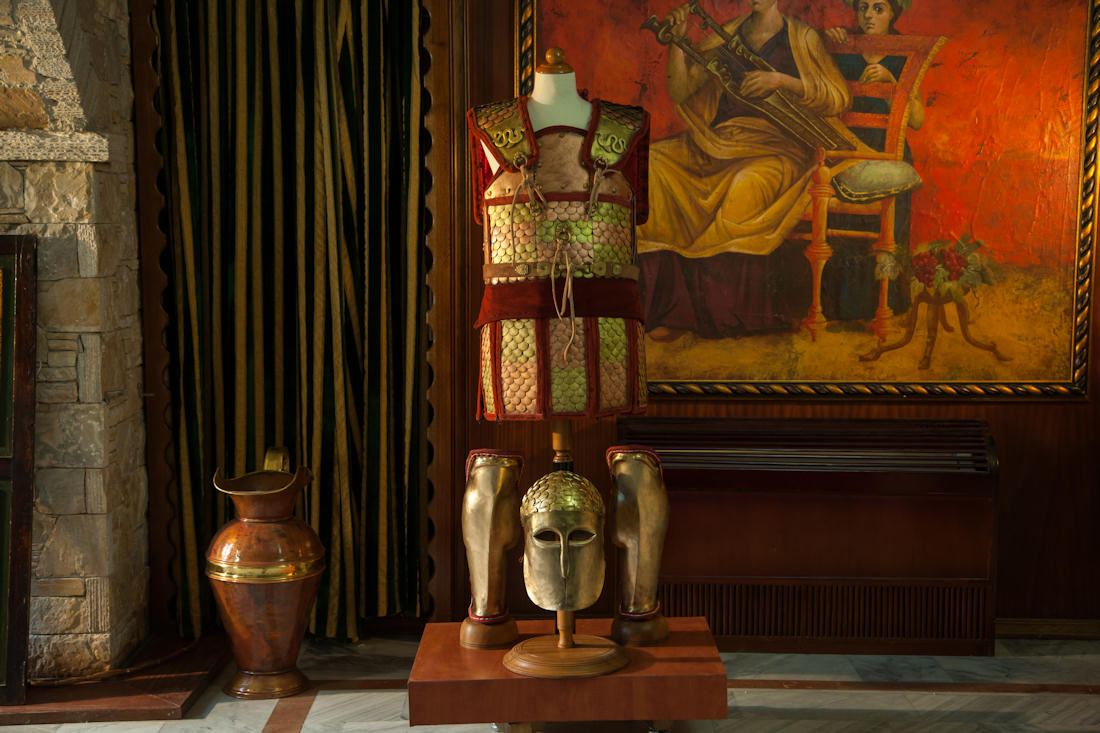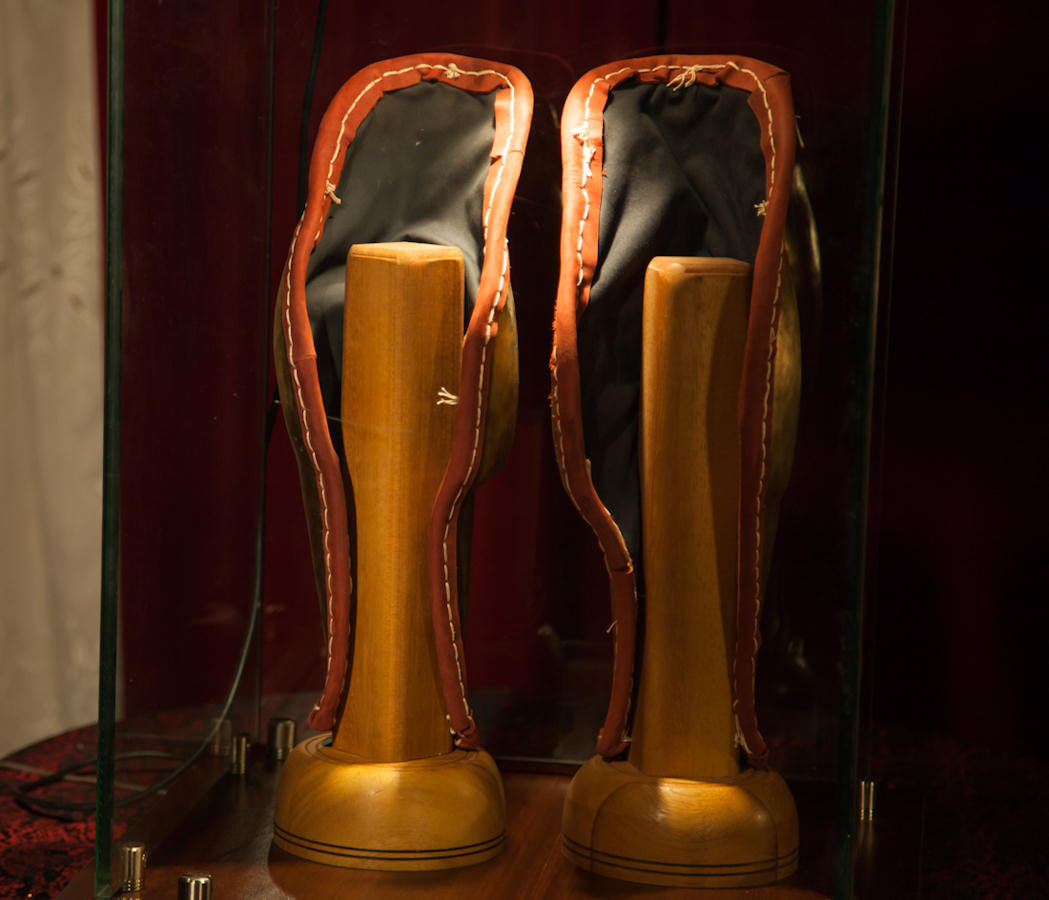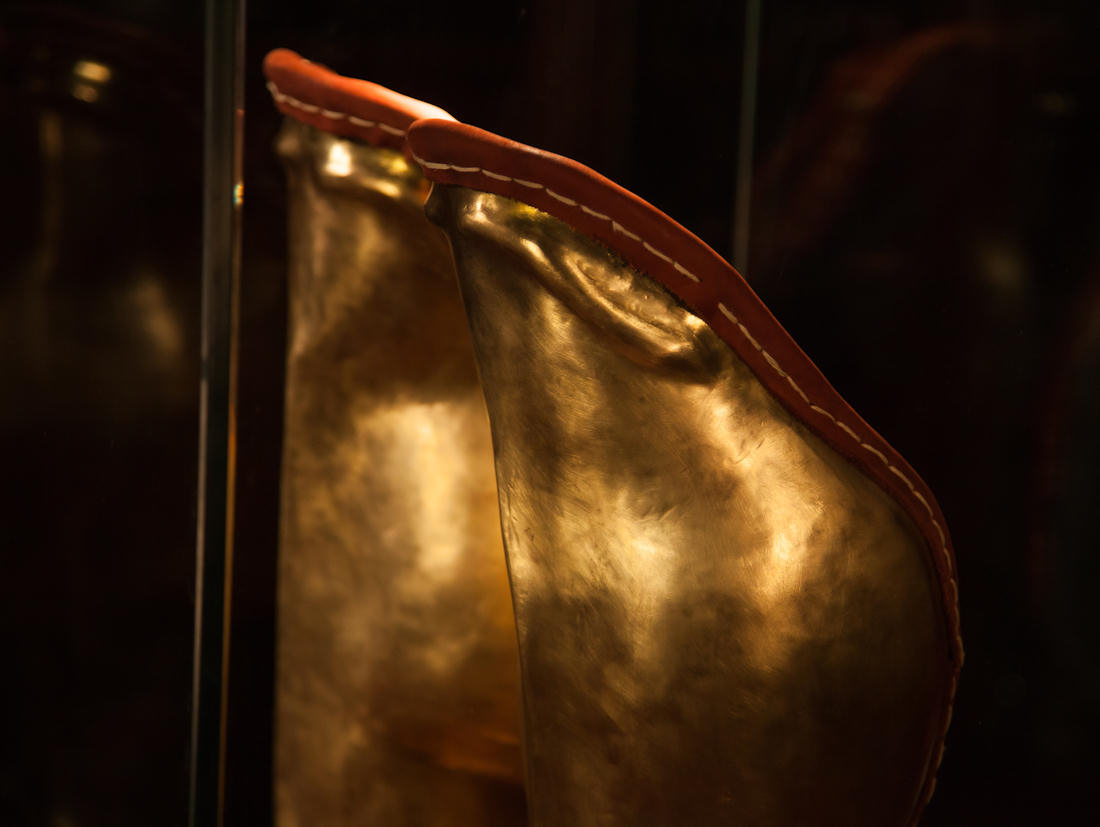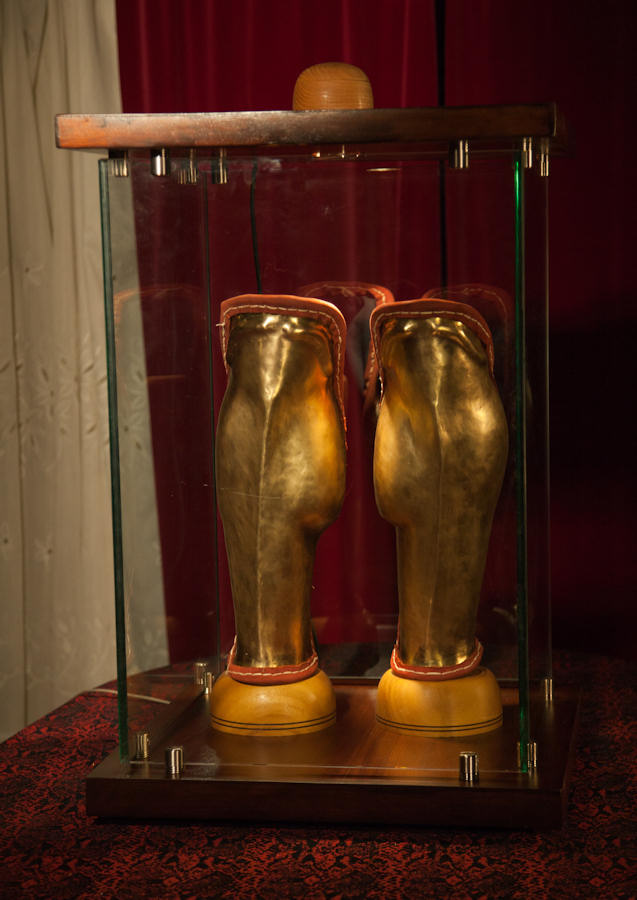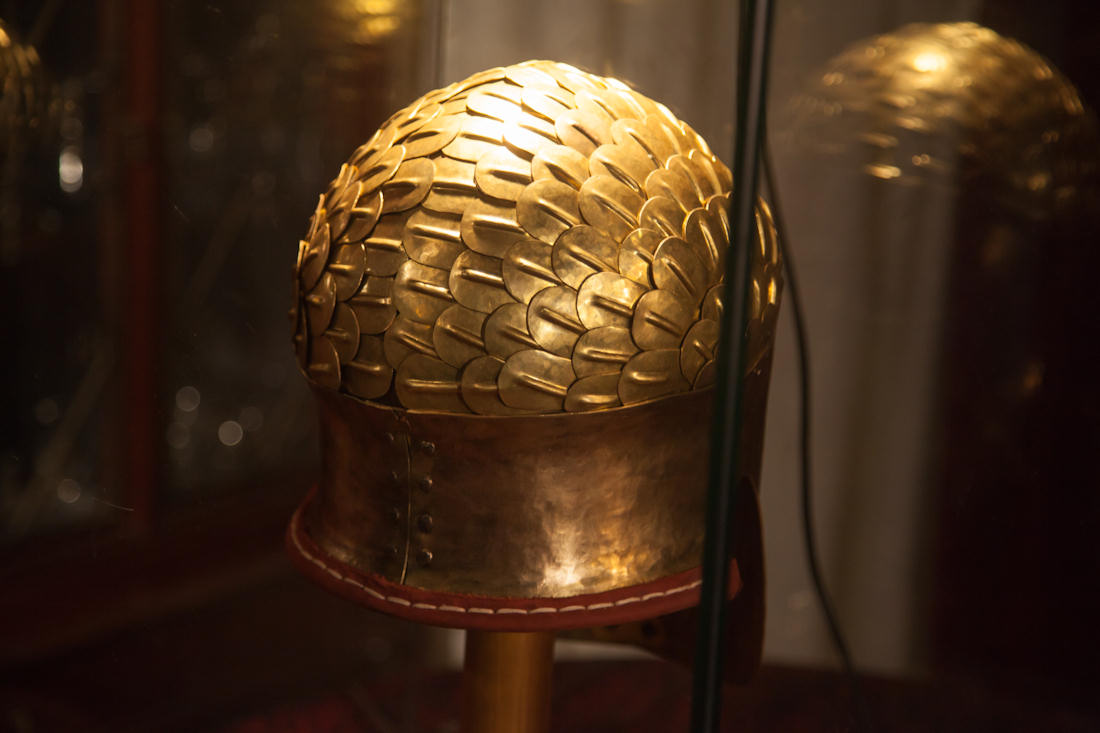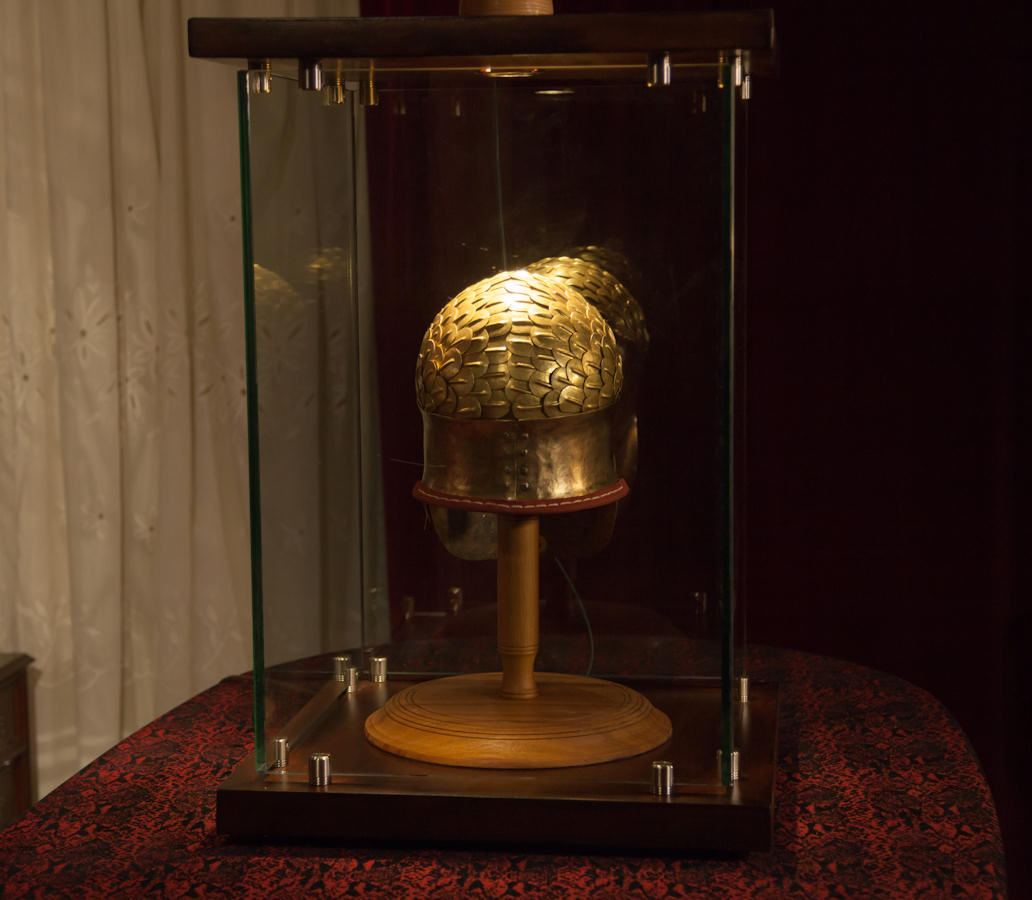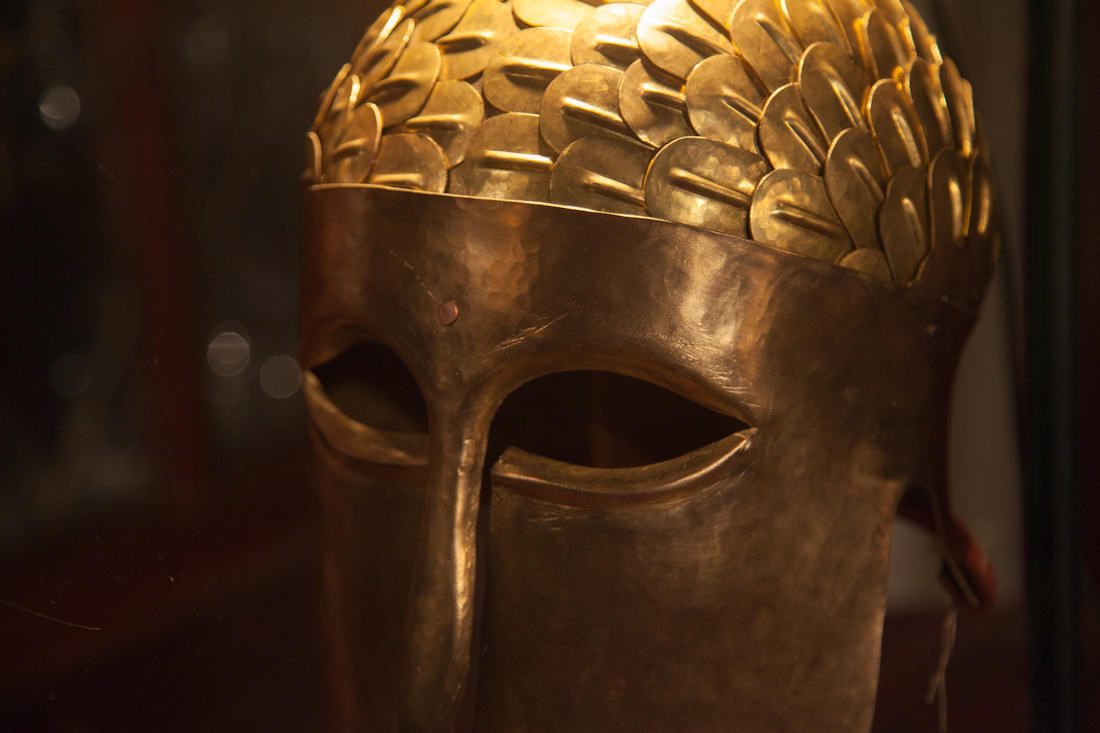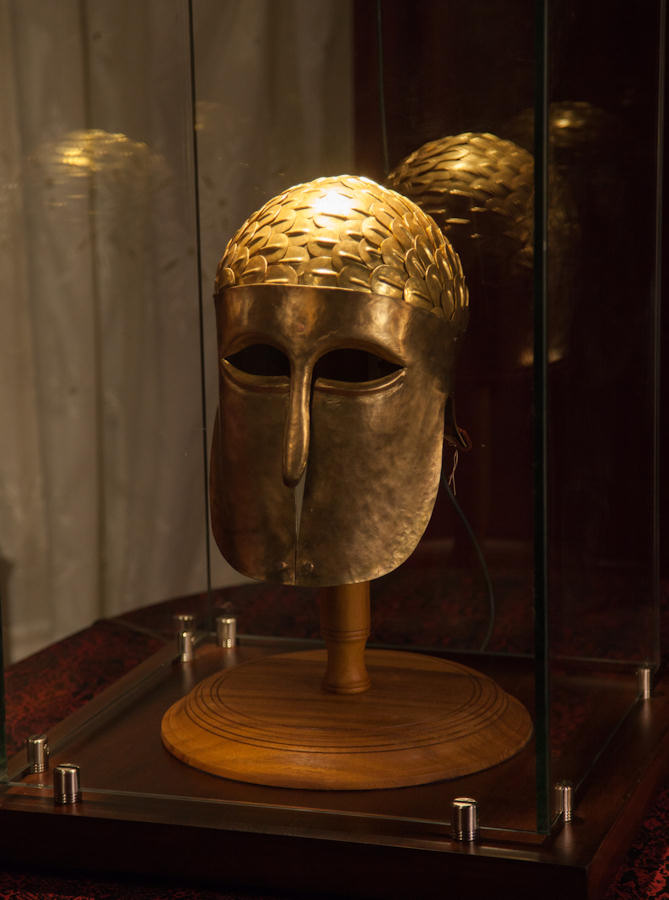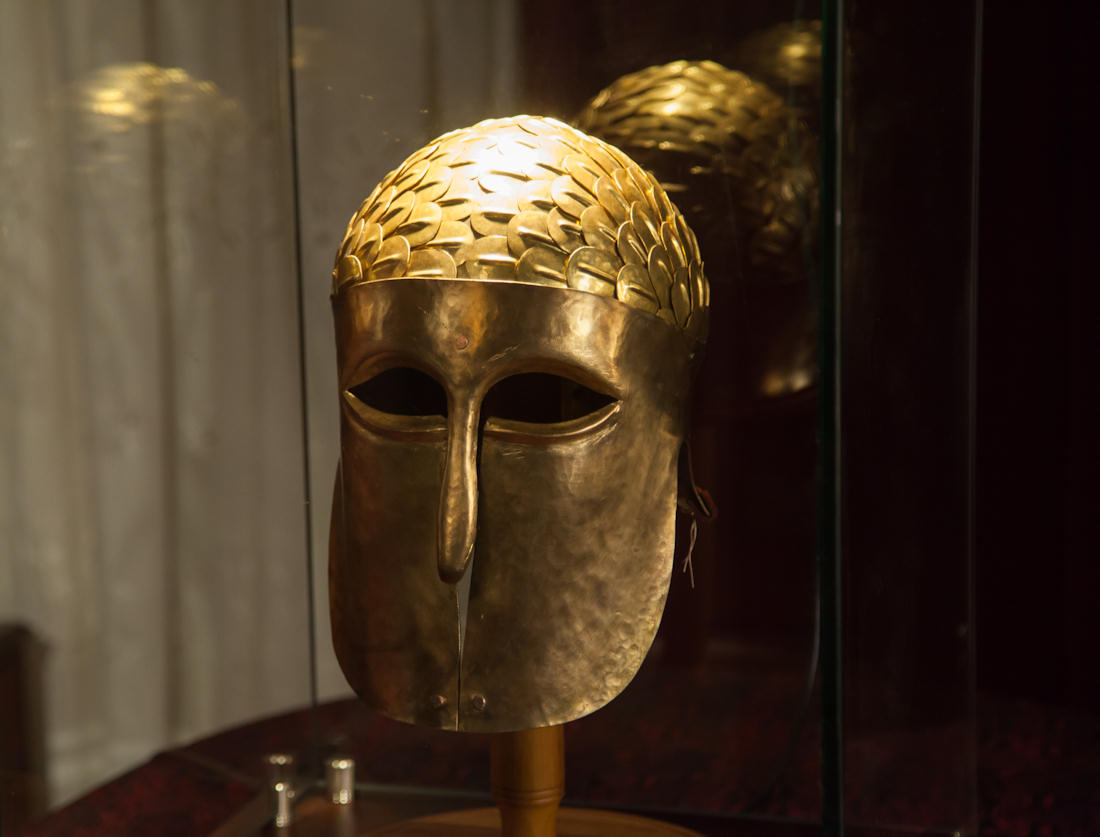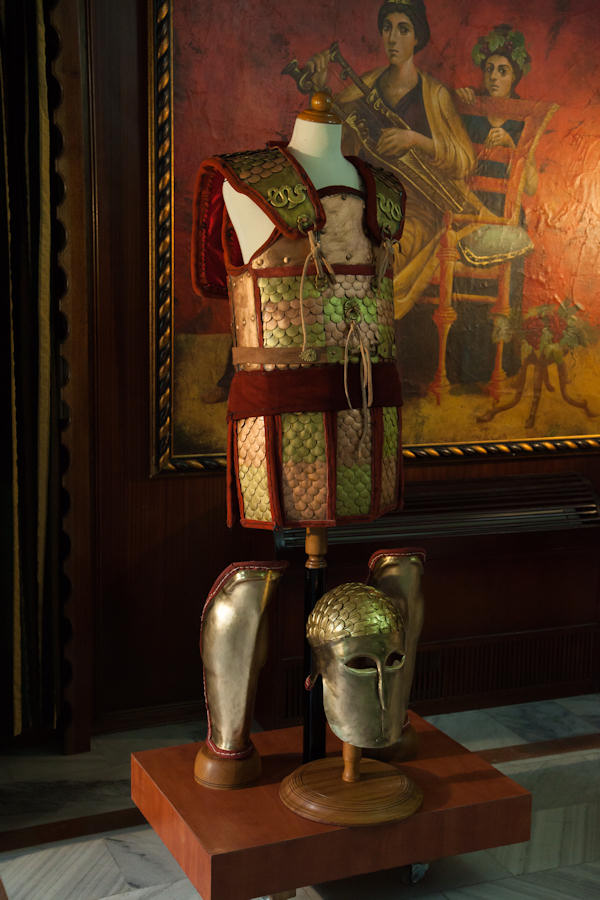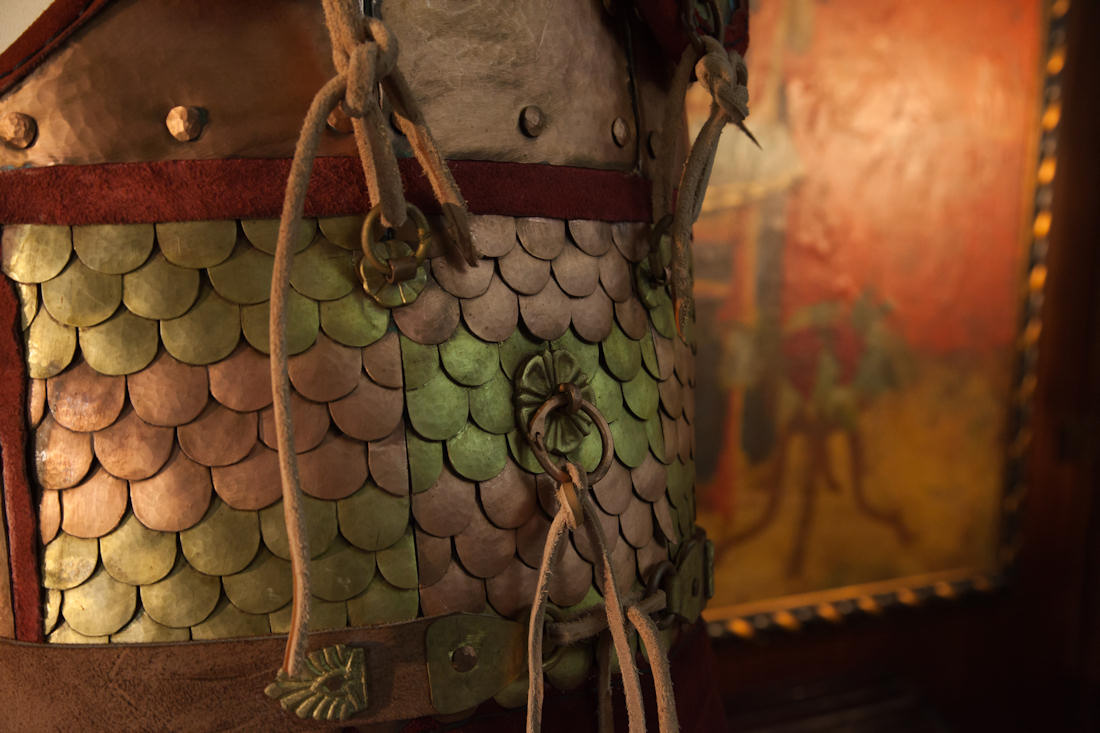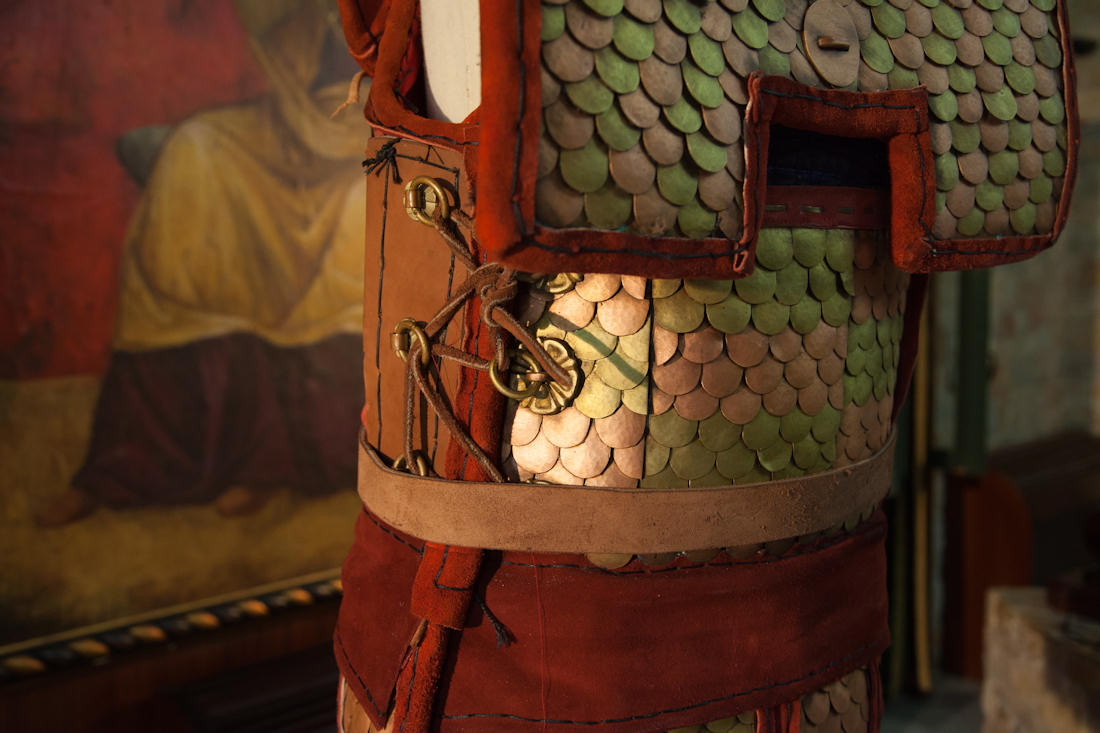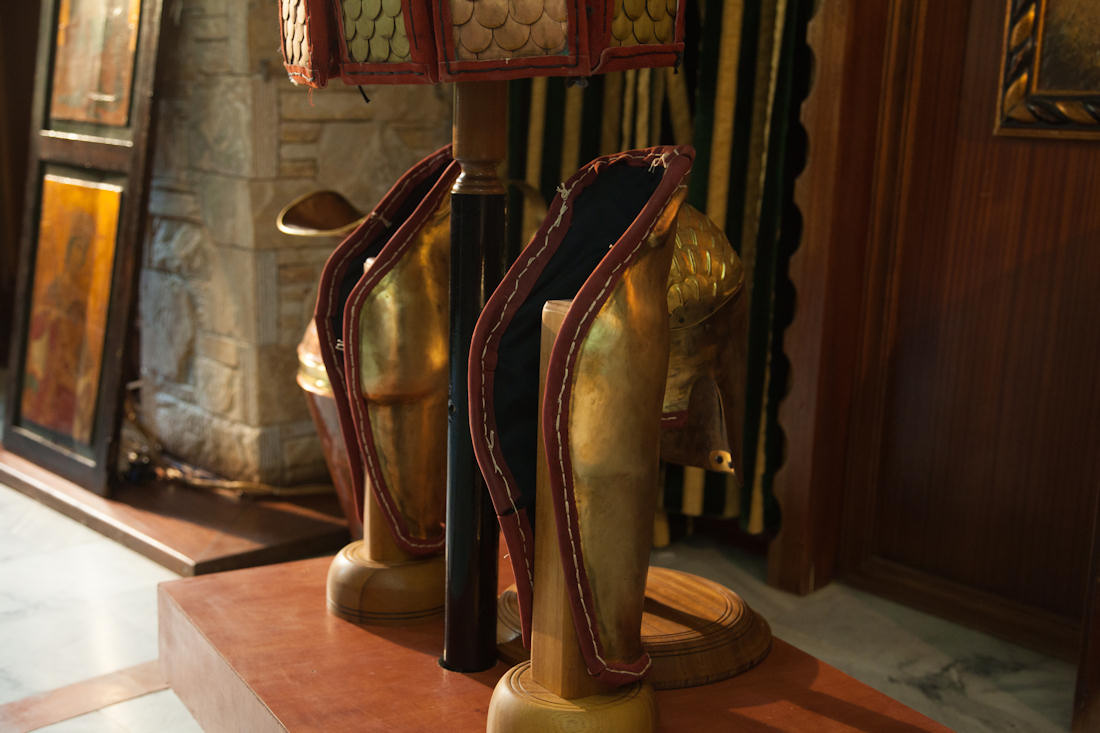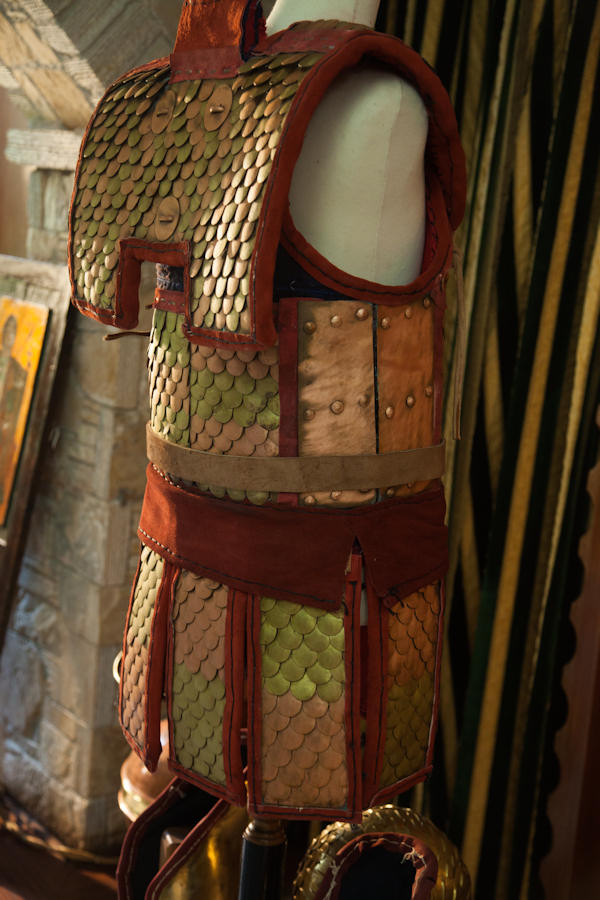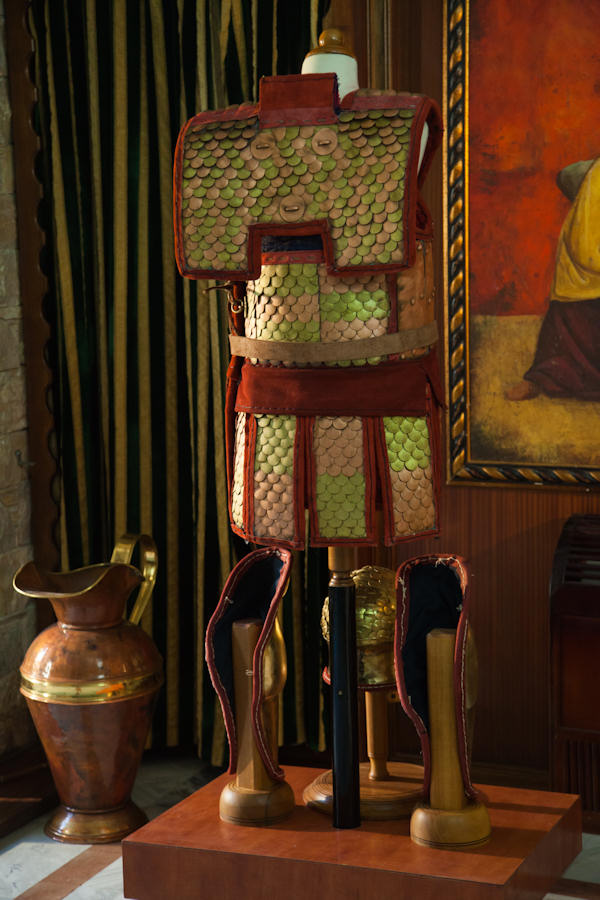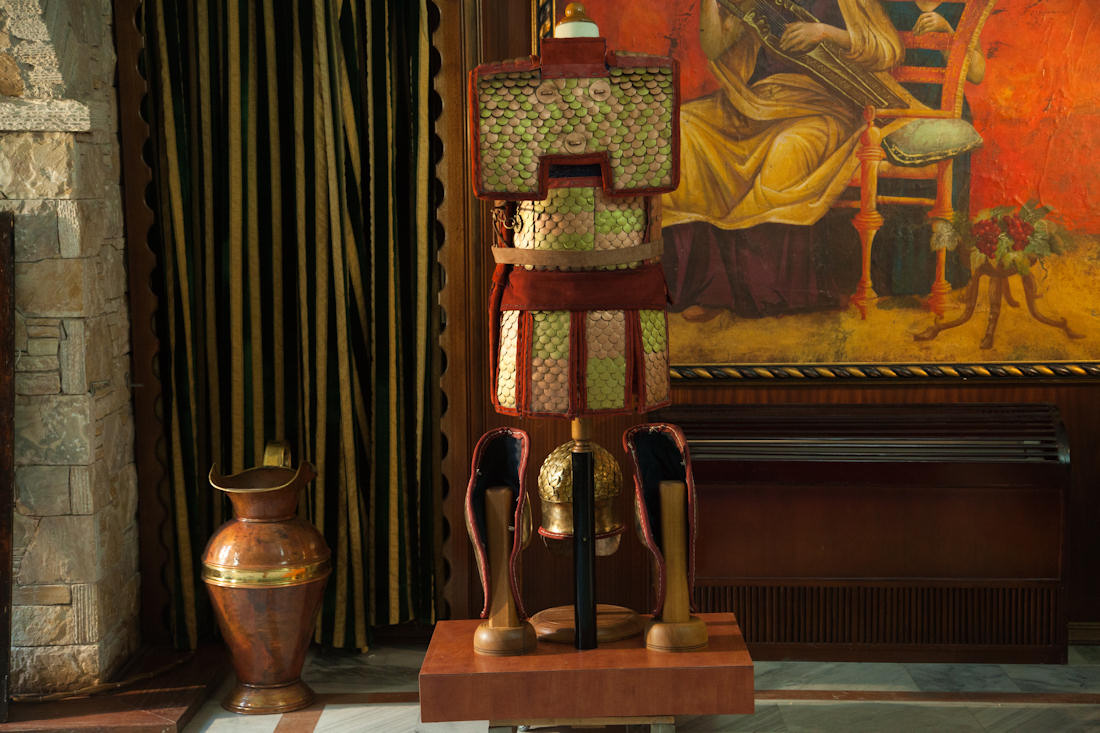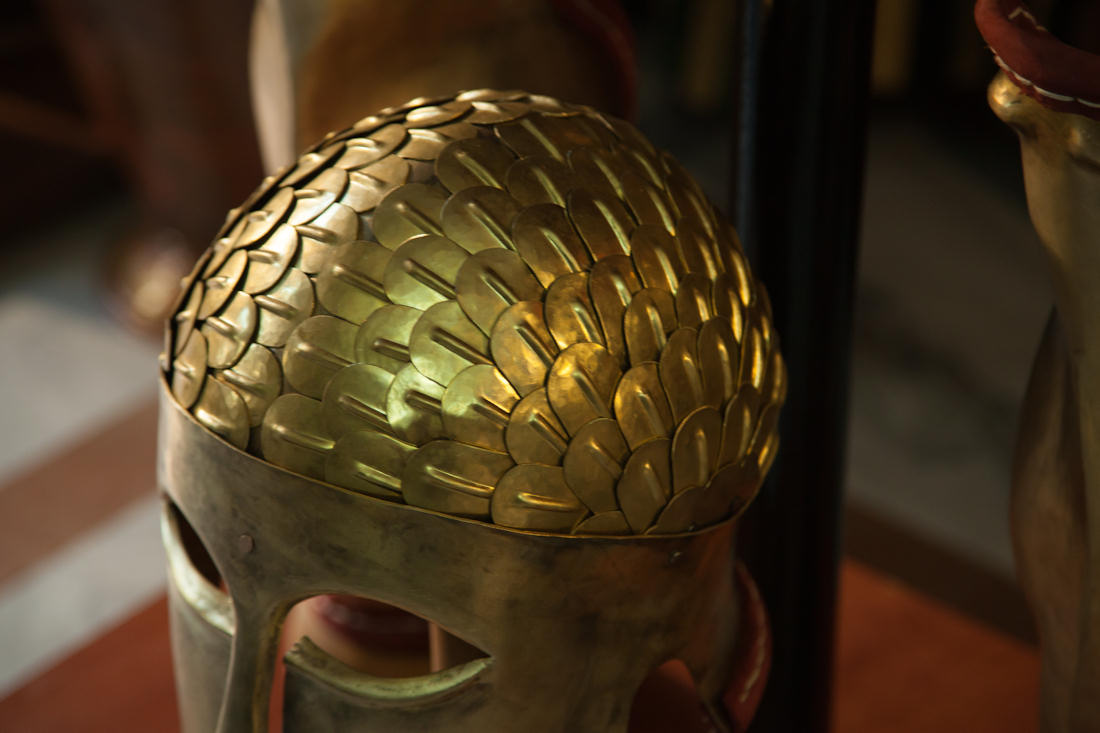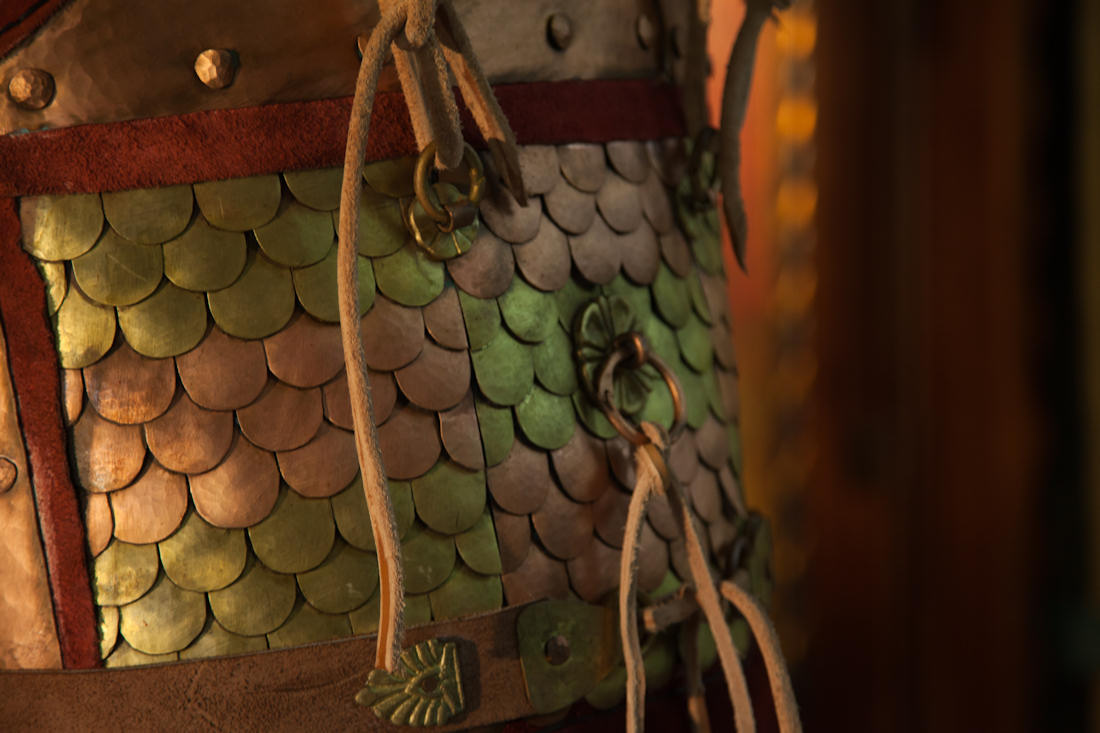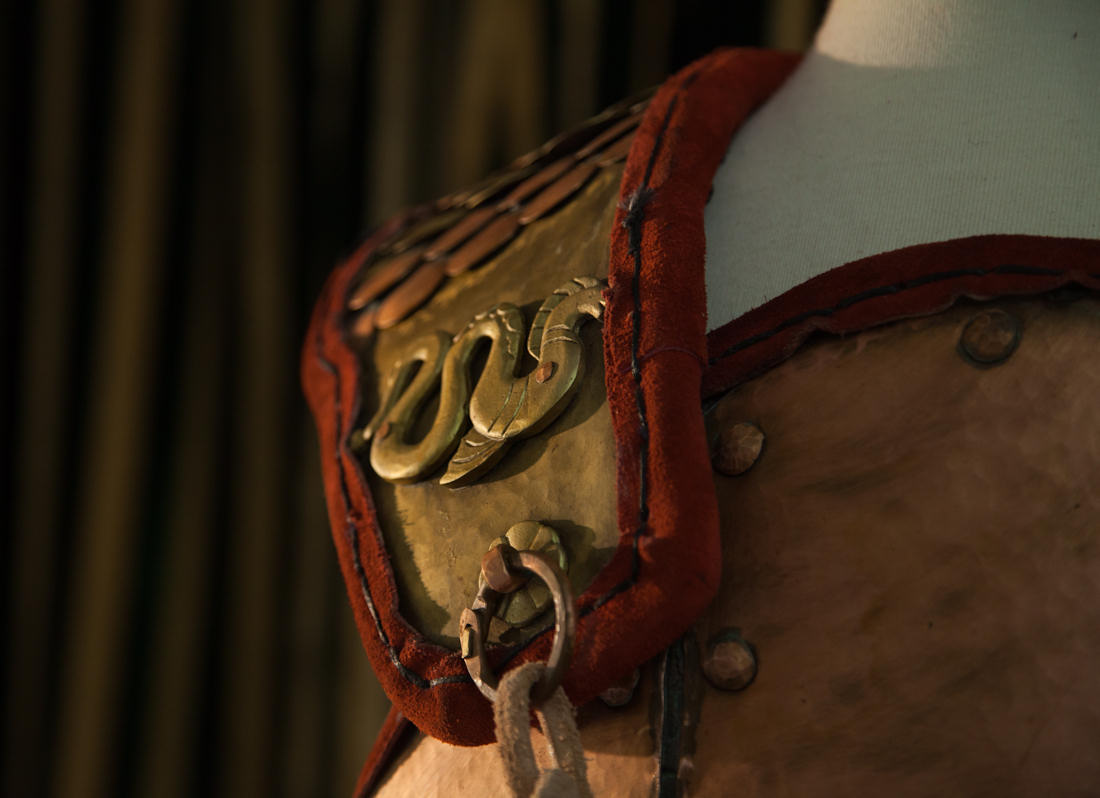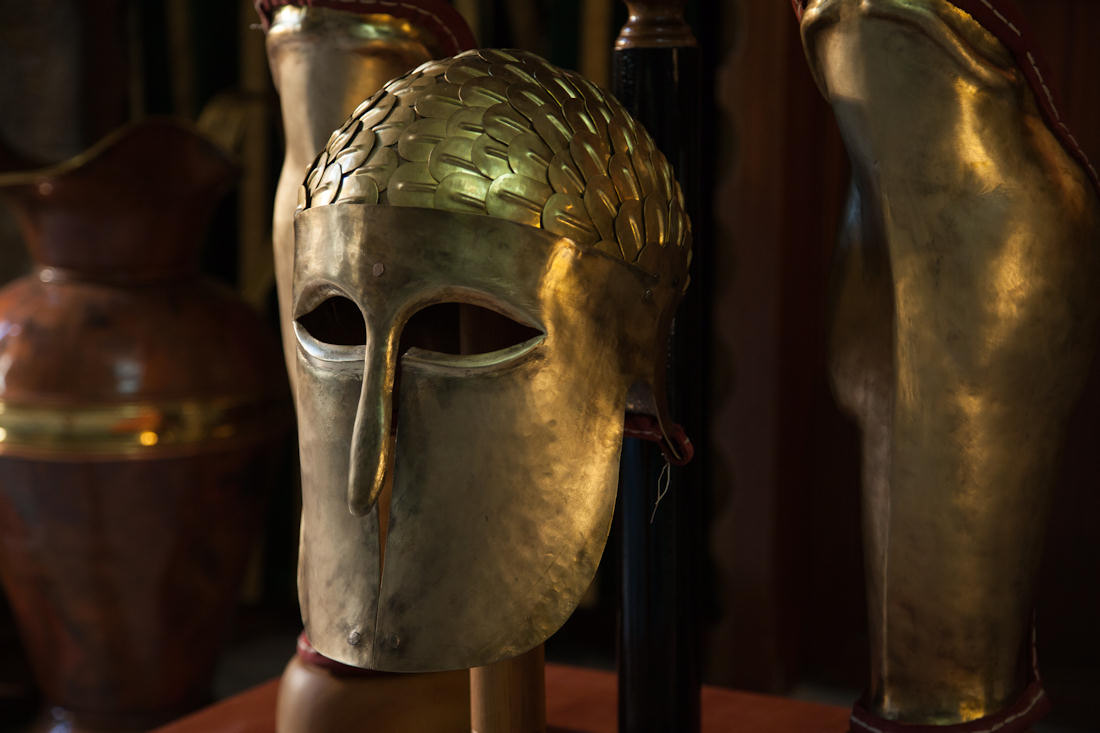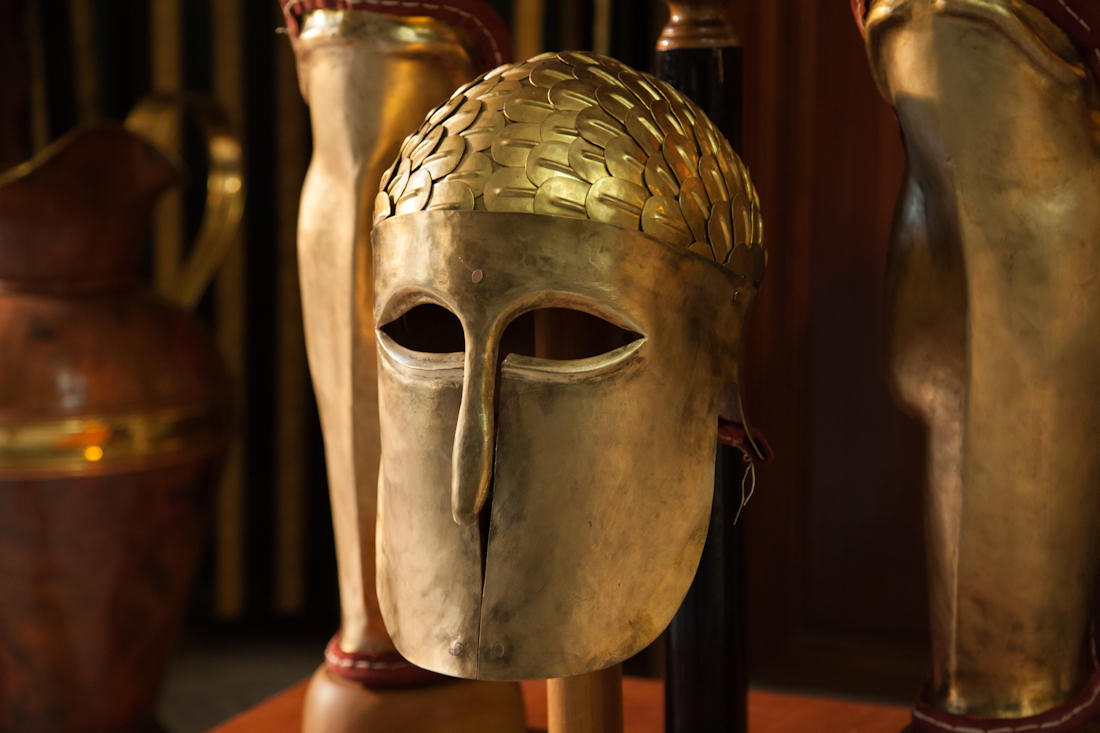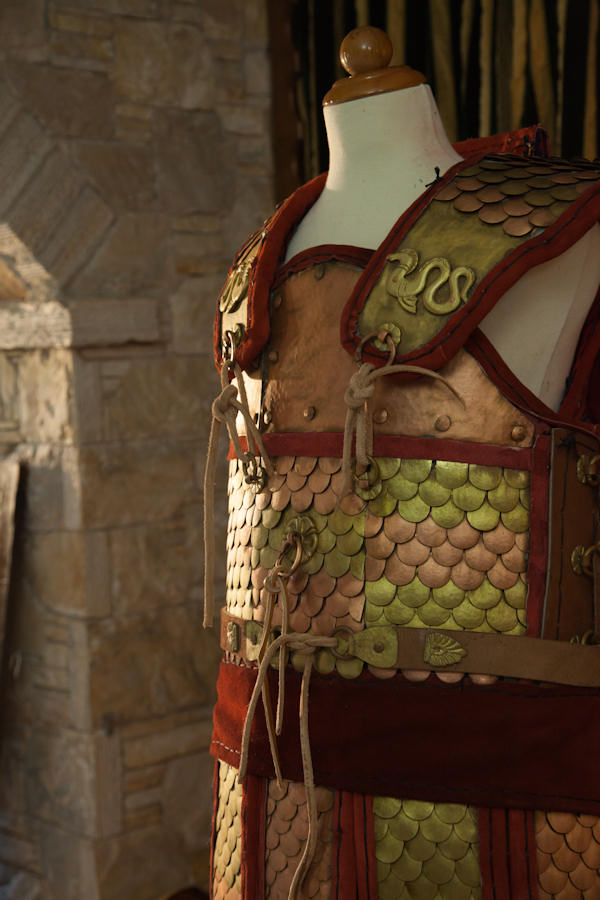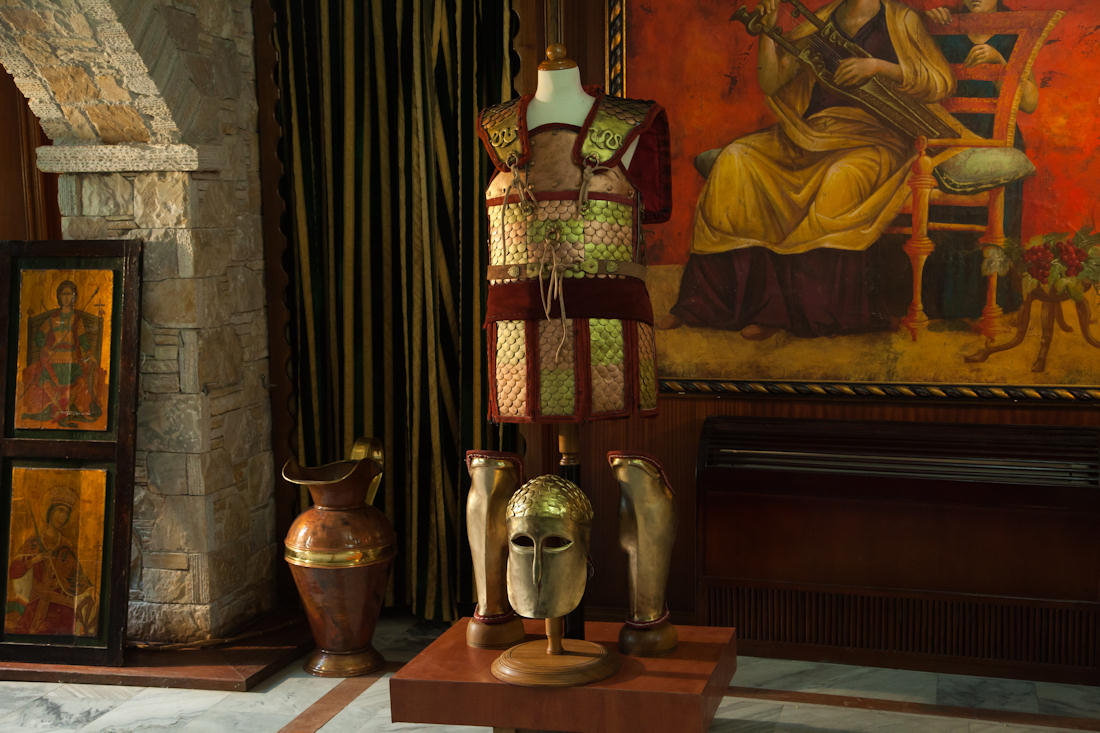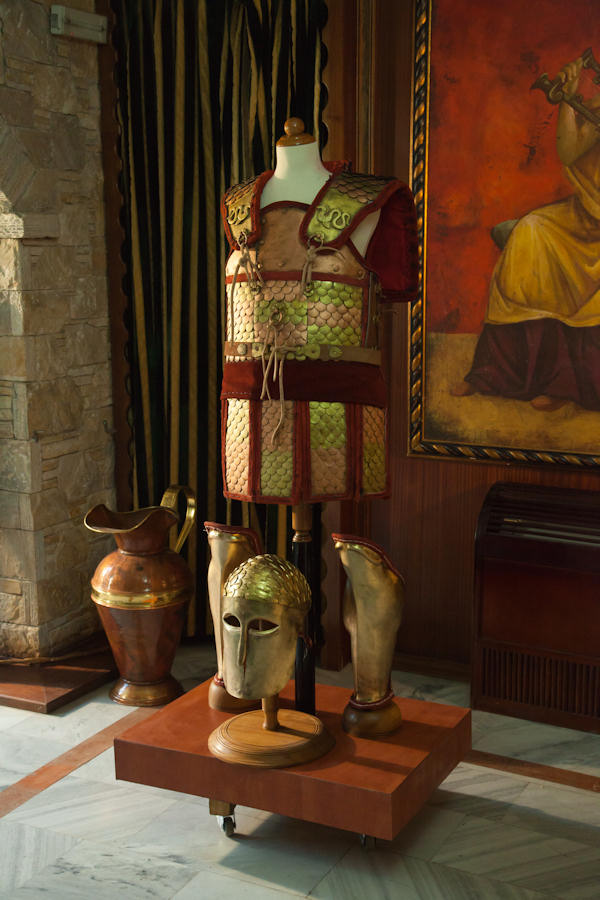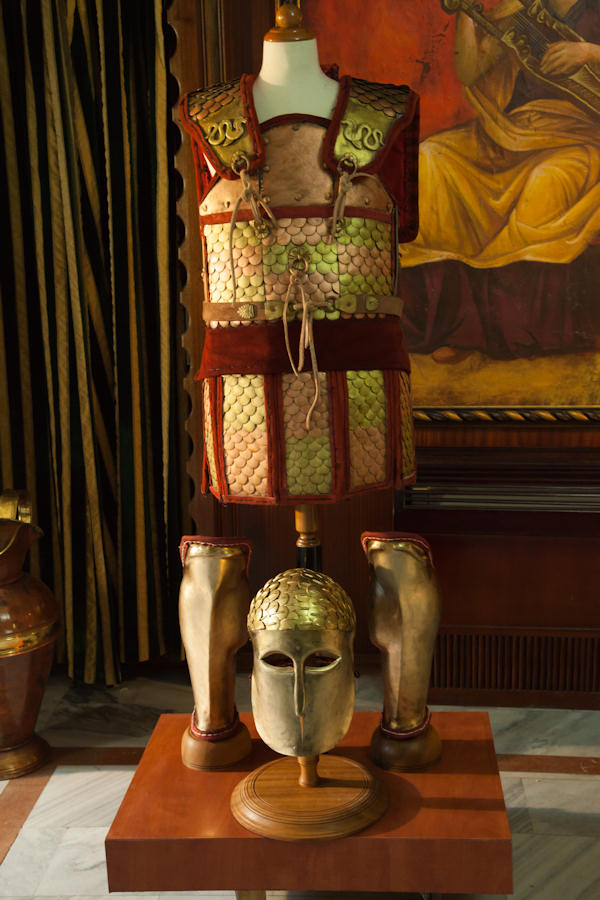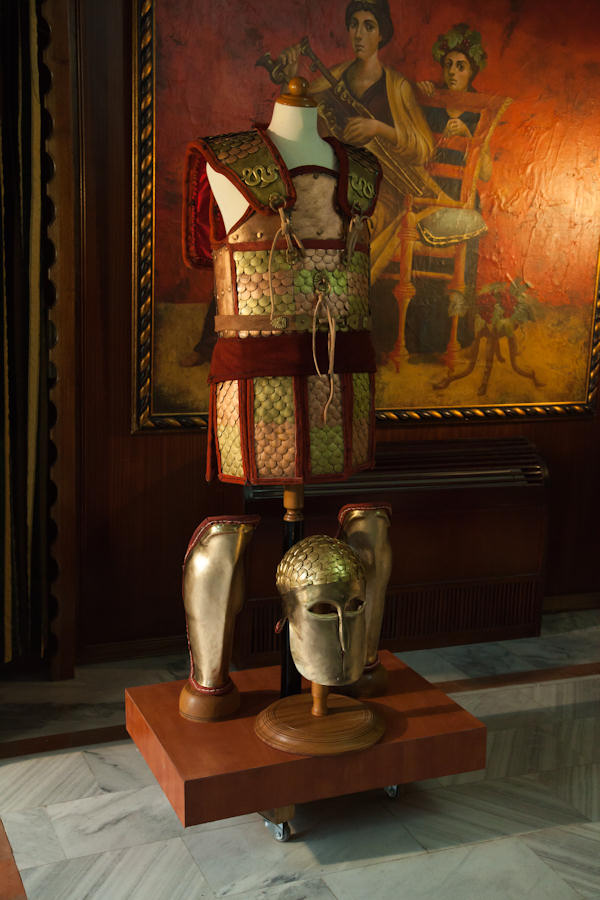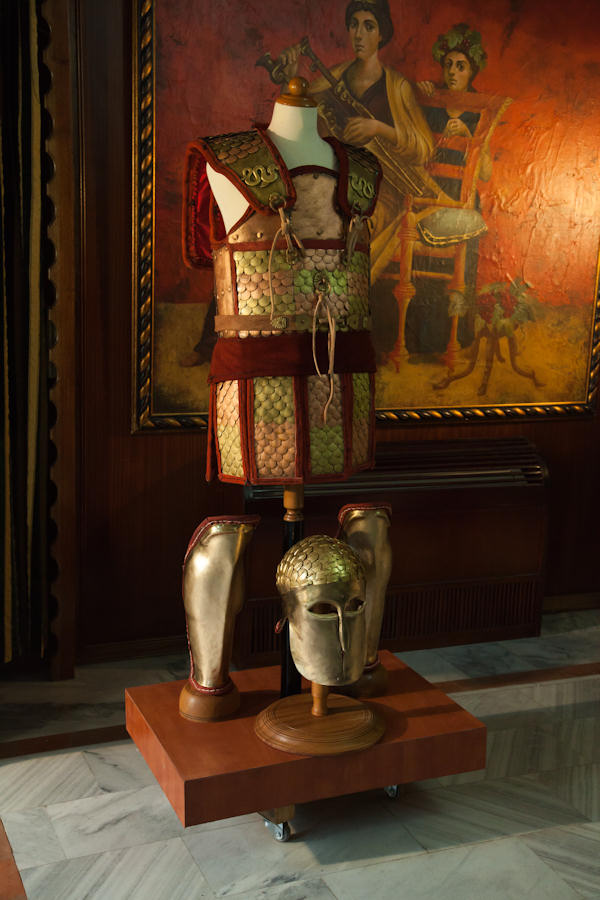Ancient Greek Armors
Linothorax of polemarch Callimachus
Marathon 490 B.C.
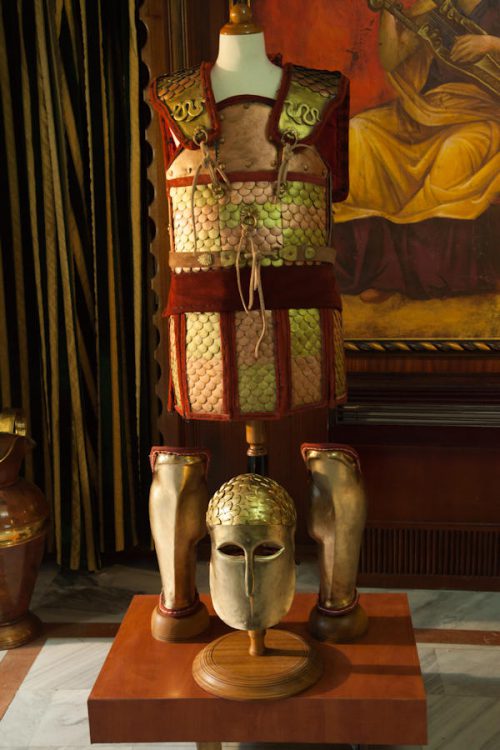
Reconstruction of Athenian complete composite armor set dated back to the beginning of the 5th century BC inspired from various artistic depictions of Athenian red figure potteries. Named by the Athenian general Callimachus who actively participated and eventually lost his life during the last phase of Marathon battle against the Persian troops (490 BC).
The organic backing of the armor is being consisted by 40m2 of folded linen textile creating three different distinctive parts. The main torso, the epomides (επωμίδες) and the pteryges (πτέρυγες). More than 1400 bronze and copper round edged scales have been settled to the fabric substratum in symmetrical geometric patterns( vertical raw arrangement ) creating a unique aesthetic colorful end result.
The epomides part includes 400 bronze and copper scales and protect the upper back and the shoulder region. A folded purple leather have been stitched all around the ends for practical and decorative reasons. At the two front ends of epomides are situated sea dragons and a cooper loops with rosette like bases ( bronze casted decorative elements ).
The main torso has been covered with 500 bronze and copper scales in rectangular frames as well. The upper breast area is being protected by one piece curved cooper sheets meanwhile for the coverage of the area beneath of the right armpit have been used two narrow rectangular copper pieces settled on place with rivets. The fastening of the armor is being achieved with a five pair ring-like mechanism The fastening mechanism of the linothorax includes five mooring points, two on the chest and three on the left side of the abdomen. Fastening is ensured by sturdy leather straps and bronze rings. Further stability is being achieved by application of a leather belt wrapped around at the height of the abdomen.
The pteryges have been deployed in one row and are covered with 500 scales as well (bronze and copper scales). Each of the nine pteryges includes folded purple leather on its ends and a characteristic two color appearance due to different scale material.
The greaves have been made from a single-piece bronze sheet with traditional forming techniques (hammered on fire). They mimic the anatomical development of the lower leg area. They are stabilized on legs without the use of straps but with the help of leather “pads” attached to the ankles, as the lateral mechanical support provided by their walls alone is insufficient for an effective use. The inner surface has been covered with thick woollen padding and textile.
The helmet is composite, the dome has been covered with bronze rounded ended / ridged scales settled down in symmetrical arrangement .The mask follows the classical development of Corinthian helmets of the 5th century BC period.
